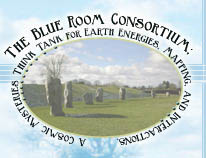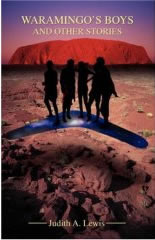

Books and Free Excerpts |
Foreword I have discovered that moving to another country is a great way to deepen my understanding, knowledge, and appreciation of my own native land. Having lived in the United States for seventeen years now, I have grown used to the questions I am routinely asked when Americans hear my accent. It is always interesting to me because for a fleeting moment in their minds I represent kangaroos, koalas, crocodiles, the Sydney Opera House, Aboriginals, the Outback, and of course Crocodile Dundee. I want to shout out that there is so much more to our great southern land but I answer any questions they have and it always amuses me when they find my accent “beautiful." |

Buy this book here:
I don't claim to be an authority on Aboriginal culture. I have traveled over a lot of this country and have worked with the Aboriginals in the Northern Territory and with the Torres Strait Islanders on Thursday Island in my earlier career as a Registered Nurse. Before working and traveling in these areas many years ago, I lacked knowledge of these original inhabitants of my country of birth. It was not part of the educational system. I have since educated myself and when I think about Australia now as a country it is often the Aboriginal energy that rises up and speaks to me. For this reason I hope that Australia will always be known as a dry continent and that large stretches of land will forever be undeveloped and thought of as uninhabitable except to the Aboriginals whose songs will echo over the land into eternity, this wonderful arid land that I love. The second section of the book is comprised of short stories set in places I have visited in person or in dreams, and others, like “Kookaburra Screaming," involved events that happened to me growing up in Australia. The characters in other stories are composites of numerous people I have met over the years who have provided me with a wonderful collage to draw from. Out of the thousands, two have remained in my awareness, as vividly clear as the moment I first met them. The character Ron in “Packy Island" was real as was the man in "Bombay Daze." The way they lived out their lives, as different as they both were, took enormous courage and fortitude. The third part of the book is purely visionary, a longer story that for me was like watching a movie that played just above my head as I wrote. It was also like overhearing fragments of a conversation, or even a great saga, in a dream. Was it about our Earth the story was telling, or another Earth somewhere else? Certainly some of its themes are relevant to our condition today, the Earth in change, landscapes falling apart, spiritual beings coming to help from all over. I have not heard the whole story through yet, so the tale is incomplete, but as soon as I do hear the rest of it, or even more of it, so will you, when I write of it soon. A lot of the other stories are visionary too and pertain to the land and its secrets and all the creatures that share it with us and those who visit it from afar. I believe that the Earth is alive and awaiting our recognition as are the other dimensions that we all hold the latent capacity to inhabit. I hope that some of my stories help you to remember what you already know, that there is no separation, that everything, stones, animals, trees, water, clouds, stars, and flowers, are a part of us as we journey together for a brief moment called life on this lovely planet. I am indebted to the Aboriginals who embody this view and to my husband, Richard Leviton, for his enormous body of work about the subtle and invisible spiritual energies of our home planet. They remind us of what it means to be alive, to open to our full spiritual potential, and to experience the invisible and powerful energetic connections that we all have to Nature and the Earth. If you are alive you are a part of the Dreaming. Waking up is the difference between being a spectator and a co-creator. My first memory of writing a composition at school when I was about eight came to me the same way I received the long story in Part III, which I only realized as I wrote these stories many years later. I remember being excited as I wrote that first composition and getting high praise and marks for it and for several after, but then my desire to write got submerged and other things took precedence. It was many years until my creativity started to open up again and now it is central to my life. Whether I am creating gardens, jewelry, or writing, translating the vision into physical reality fuels my life. When I first started to honor my creativity, I had a vision of an old woman, a magus holding a huge clear glass bowl full of colored, luminescent balls like bubbles and giving it to me. I think the bubbles are infinite and the more I open the more I have. As I take one out more appear. Each one holds the seed of a vision, a creative idea, a storyline, a jewelry design, or a painting. As a young girl I would roam the dry river beds in Australia looking for agates and other stones and dream. I was always amazed at how many different versions of agates there were; it was an endless stream of variations, an endless Dreaming. Each of us is unique and we are all highly creative. Some of us are more in touch with it than others, more willing to enter the Dreaming and create something that was not here before. We all have the ability to tune into another reality and see what happens, Consensus reality is not the only way to be in this world. The Aboriginals never tuned in to this and maybe they still carry the original idea of who we once were when we came to this Earth. They exist within the Dreaming, anchored deeply to the Earth, and wait for us all to awaken to create with them. Buy this book here:
|
Newsletter (Back Issues) | Articles | Primers | About Blue Room | Projects and Research | Workshops and Field Trips | Trainings and Consultations
About the Ofanim | About the Founder-Director | Information for Investors | Links | Contact the Consortium
 Waramingo's Boys and Other Stories—Visionary Fiction from Judith Lewis
Waramingo's Boys and Other Stories—Visionary Fiction from Judith Lewis